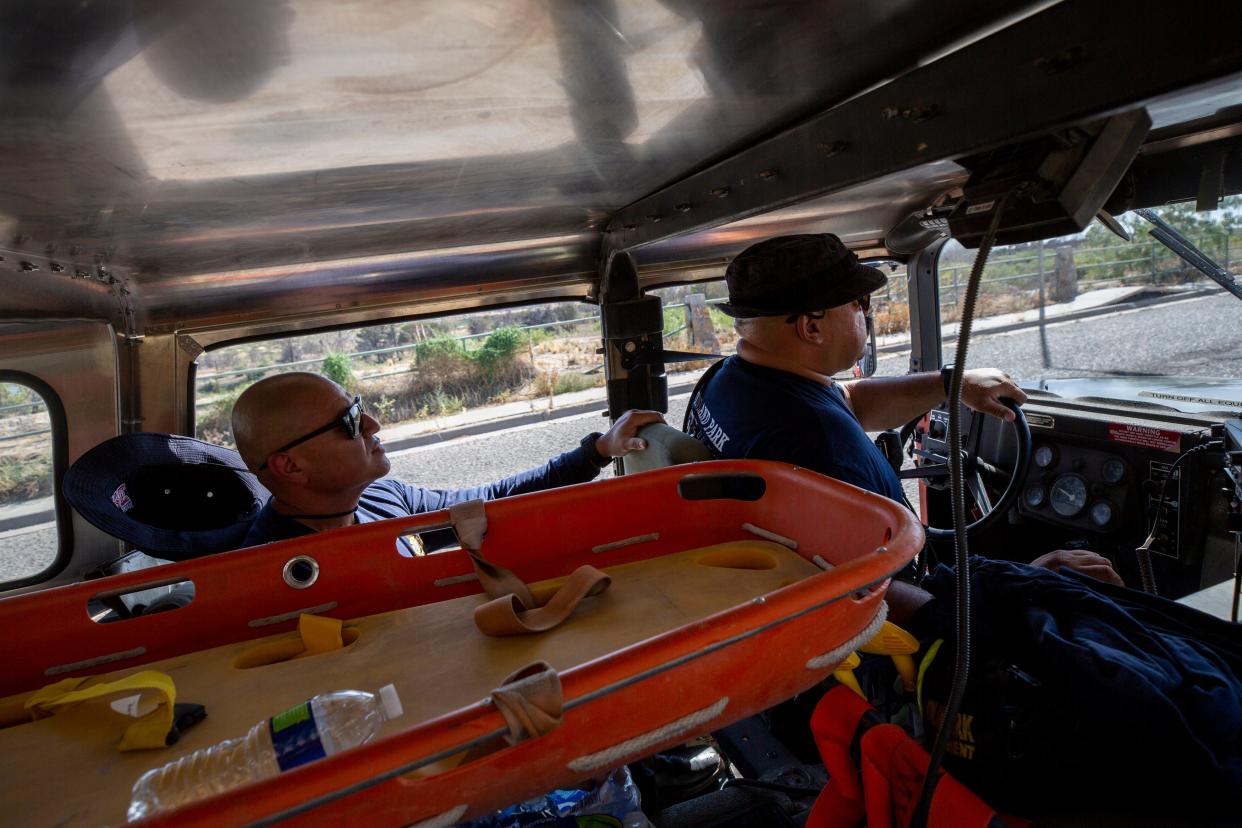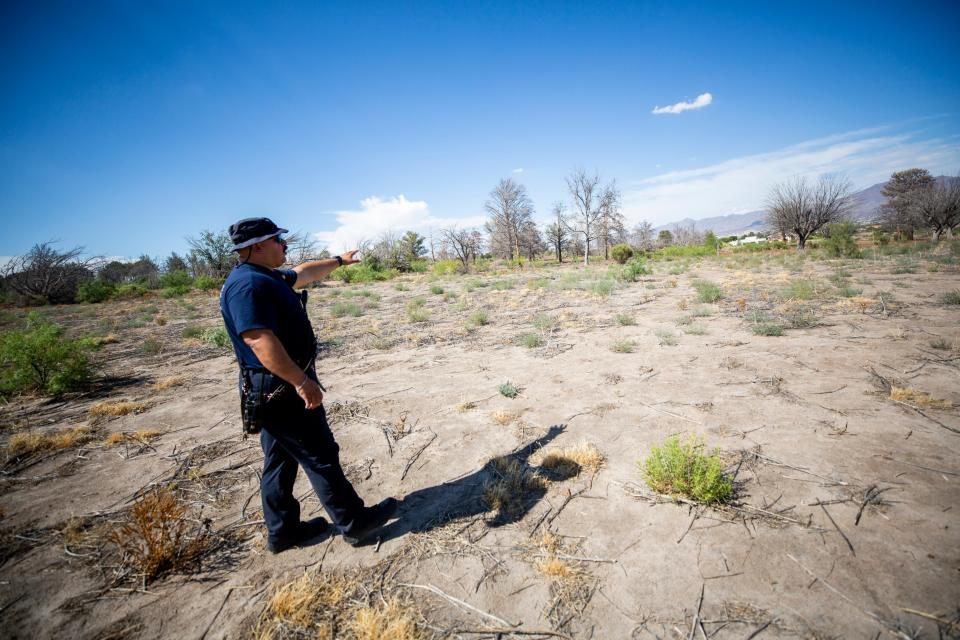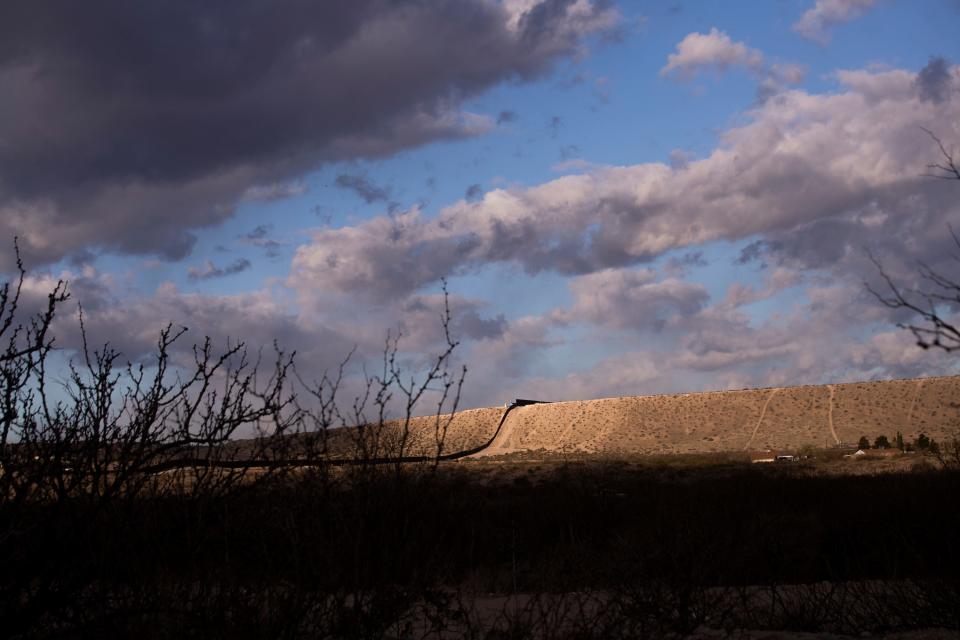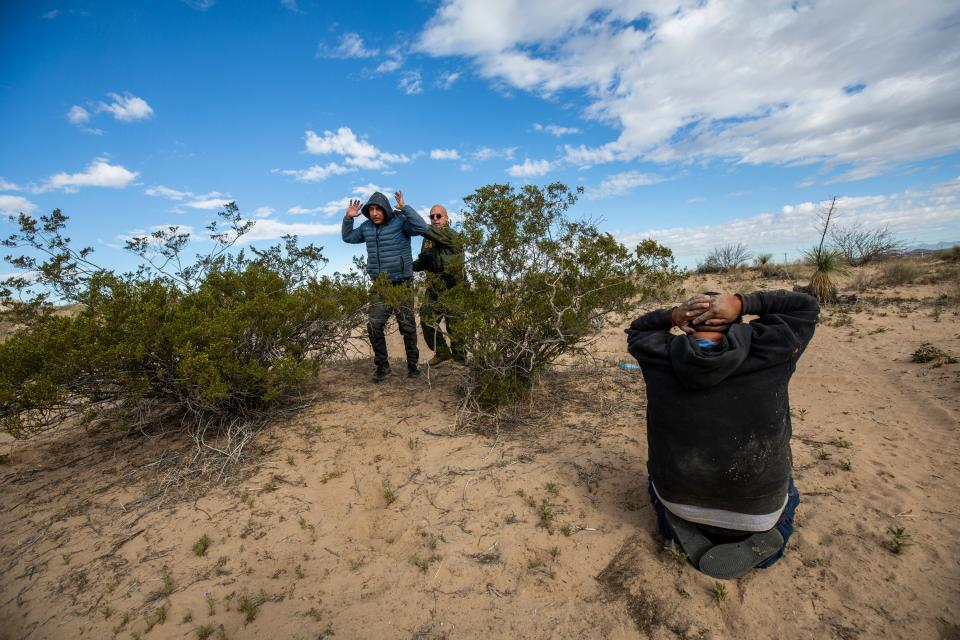'It’s burning out there': Amid record heat, migrant deaths at border surge in Sunland Park

SUNLAND PARK, N.M. — Fire Capt. Joseph Mayorga steered a Humvee through the desert between the U.S.-Mexico borderline and bustle of the city, tracing a map of the places migrants were saved or lost.
Among the sandy hills behind a school, Mayorga tried to save a migrant woman in cardiac arrest. He pulled a heat-exhausted woman from a slope near the landscaped yards of a gated subdivision. He found another collapsed against a rock wall, so riddled with red ant bites he thought she might have small pox.
More often, he and other first responders at the Sunland Park Fire Department are called to recover bones.
Record triple-digit temperatures have driven an increasing death toll in 2023 in U.S. Border Patrol's El Paso Sector, which includes southern New Mexico. More than 70 migrants have died in the first nine months of fiscal 2023, including at least 14 in Sunland Park since May — among them a 12-year-old child, according to the Sunland Park Fire Department.

A year ago, in fiscal 2022, Border Patrol's El Paso Sector reported 71 migrant deaths between October and September.
"Somebody may call from out in the desert," Mayorga said as he drove a washboard path through the desert buffering the city from the border fence. "They may barely be able to talk: 'I'm dehydrated. I don't know where I'm at.' Even if you are familiar with the area, it's easy to become disoriented out here."
More: Texas Democrats in Congress: Biden must assert authority to check Abbott on immigration
Sunland Park lies just over the Texas border in New Mexico, an extension of El Paso's sprawling metropolitan footprint.
The city's neighborhoods, shops and schools abut harsh desert terrain but appear deceptively within reach from the vantage point of the 30-foot U.S.-Mexico border fence. That bird's-eye view would show a half mile of desert, a mile at most, to a road: survival and smuggler's ride out of town.

But for those who survive the drop, nothing from the ground looks the same as before.
Tall mounds of creosote and thorny mesquite obscure the view north yet provide little shade. Heat radiates from above and below. The sun is unrelenting. The sand, at midday, burns like a stovetop.
The region has been under a National Weather Service excessive heat warning for weeks. Temperatures, measured at the El Paso Airport, have topped 100 every day since June 16 and hit a record 109 twice this week.
Migrants who cross this part of the border aren't turning themselves in to Border Patrol or asking for asylum. Often, they've been in the hands of smugglers in Mexico, in dangerous and unhealthy conditions, and are trying to evade apprehension. They may be Mexican or another nationality often excluded from lawful pathways to the U.S., or they may have a record of past entries that prevent them from qualifying.
“They aren’t asking for help and they are within hundreds of yards of help; that is the tragic irony," said Landon Hutchens, spokesman for U.S. Border Patrol in El Paso. "It’s burning out there.”
Hundreds of rescues, dozens of deaths
Border Patrol's El Paso Sector is leading the nation this year in migrant encounters and apprehensions.
The sector — which includes El Paso, part of West Texas and all of southern New Mexico — has surpassed the next-busiest regions in Texas and Arizona by tens of thousands of encounters in fiscal 2023. El Paso recorded more than 334,000 encounters October through May, up 88% from 177,792 encounters during the same eight-month period a year ago.
At the high point in early May, El Paso registered more than 2,700 migrant encounters per day.
Many of the encounters were with people turning themselves in to border agents near Downtown. Migrant families were crossing a stream of Rio Grande and waiting in lines at the border fence. The Biden administration's creation of an appointment system, via the CBP One app, diverted many asylum seekers and other migrants to safer, lawful pathways, while Texas Gov. Greg Abbott's deployment of reams of concertina wire along the Rio Grande drove others to the dangerous desert west of El Paso.

The number of migrant encounters in the El Paso Sector dropped dramatically after Title 42 expulsions ended in mid-May, dipping to around 500 per day in recent weeks. But the majority of those ongoing, persistent crossings are happening in and around Sunland Park.
"We are currently recording a significant number of migrant deaths in New Mexico due to the desert terrain and extreme heat," Border Patrol spokesman Ricardo Barragan said.
More: Biden said Trump-era family separations were 'abhorrent.' So why is DOJ fighting relief claims?
Border Patrol agents have made more than 311 rescues this fiscal year. But distress and body recovery calls often fall on local first responders and law enforcement, too, including the Sunland Park fire and police departments.
Last summer, May through August, Sunland Park Fire put the toll of likely migrant deaths at 15, Chief Danny Medrano said.
With El Paso trampling heat records after more than 30 consecutive days of 100-plus temperatures, the leading cause of distress and death "appears to be heat exhaustion," Medrano said. "From what we're hearing, they're lost anywhere from six hours to two weeks.
"It's hard to fathom," he said, "but when you stand up, the creosote may be six, seven feet high. You can get lost very quickly. One, it's night. You're disoriented. You're panicked. You're malnourished, dehydrated. You know you're being chased and you were told by a smuggler: 'Go that way.'"
@SunlandParkFire crew working their way to one of the injured persons on Mt. Cristo Rey last night pic.twitter.com/67ihxDsuW0
— SunlandParkFire (@SunlandParkFire) July 14, 2023
'Seconds are counting'
The Sunland Park Fire Department's official Twitter page has been a stream of posts about migrant rescues and body recoveries since May; Mayorga led several of the searches. One after another, the posts show red fire vehicles, an ocean of orange sand and green creosote — and coordinates, where a life was saved or lost.
Sometimes a Border Patrol agent finds a person in distress, or a body. Sometimes it's a resident out for a ride on an ATV. Their call often goes through 911 dispatch and Mayorga and other first responders on his team head out. Sometimes migrants will call for help if they are lost or hurt — and more afraid of dying than being apprehended.
"The three closest cellphone towers will triangulate the location to give you a vicinity," Mayorga said. "Then dispatch ... will give us those coordinates and we have to go in and search.
"Seconds are counting at this point," he said. "Once heat stroke kicks in, it's too late. But once heat exhaustion kicks in, it's minutes, maybe an hour. By the time we get the call it's probably too late already."
Mayorga stopped to wipe the sweat running down his neck. He took a swig from a gallon of water cloudy with dissolved electrolyte powder — one of his many tactics for surviving 48-hour shifts that find him working under the sun for hours.
Hours after returning to the station, the body of another likely migrant was found.
Near the border fence, he inspected footprints in the sand pointed north. Border Patrol ATVs were deployed in the area; agents were likely tracking a group.
"It leaves you to question how many bodies are still out there," Mayorga said, "that no one has come across yet."
This article originally appeared on El Paso Times: Desert terrain, extreme heat: Migrant deaths surge in Sunland Park

